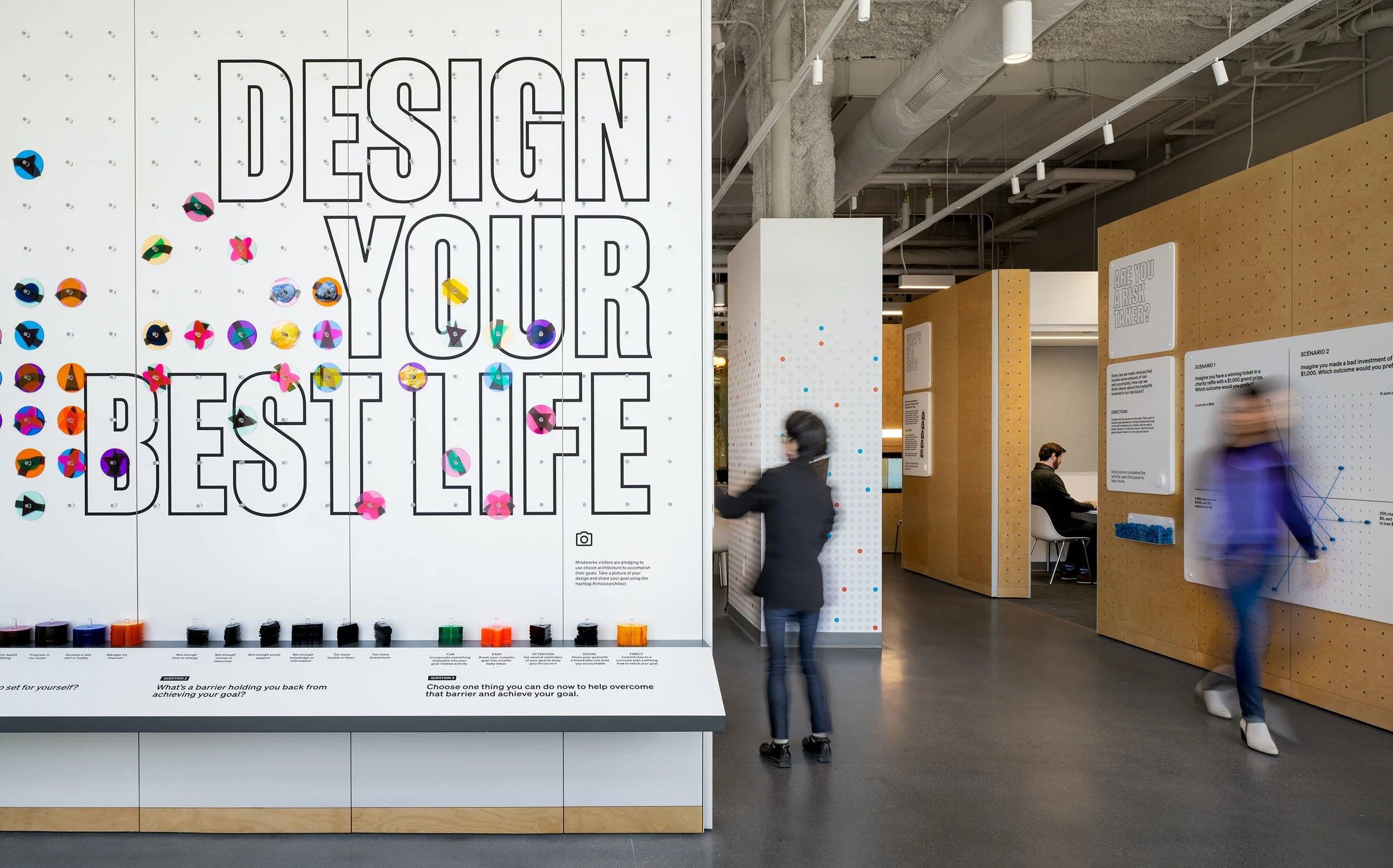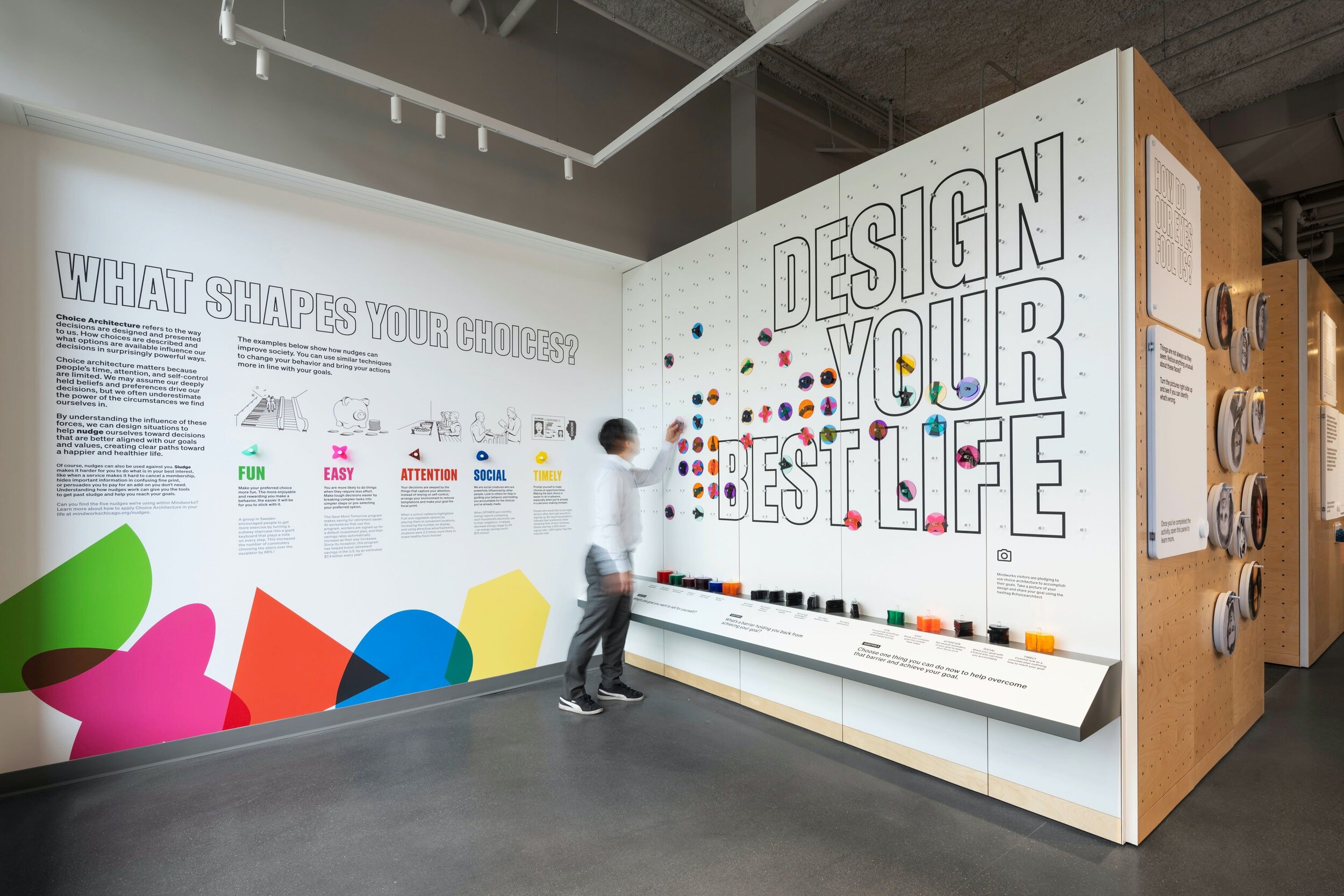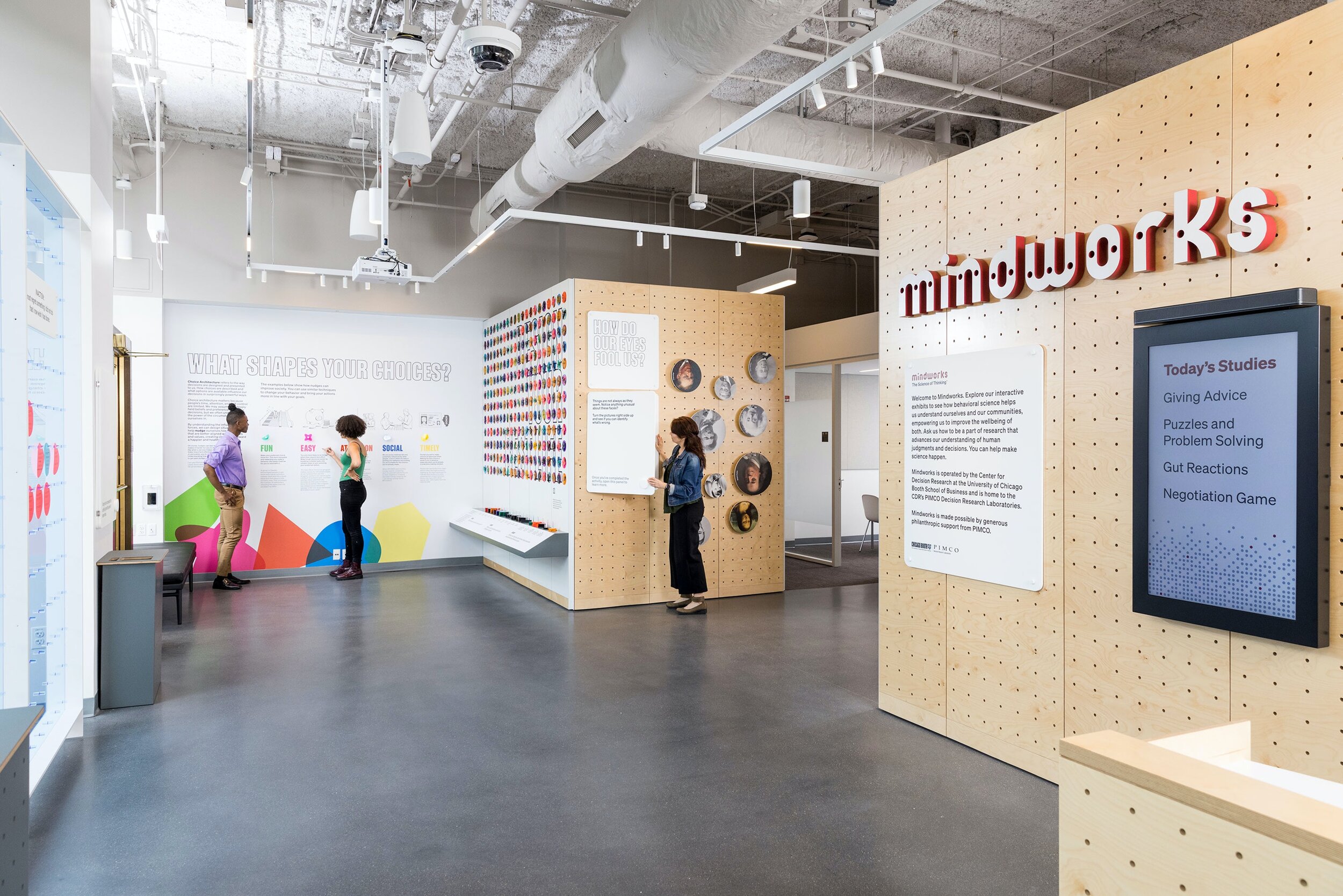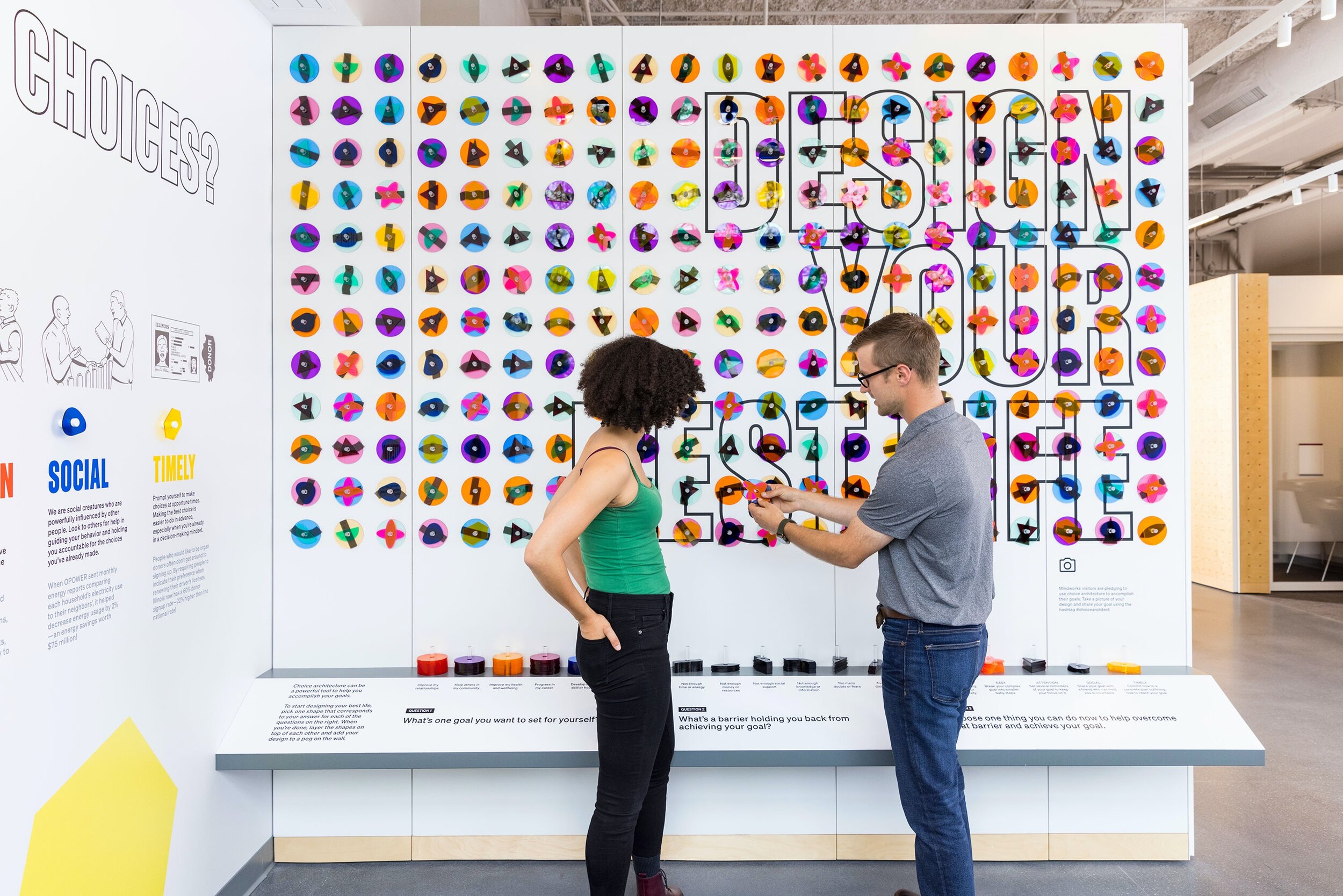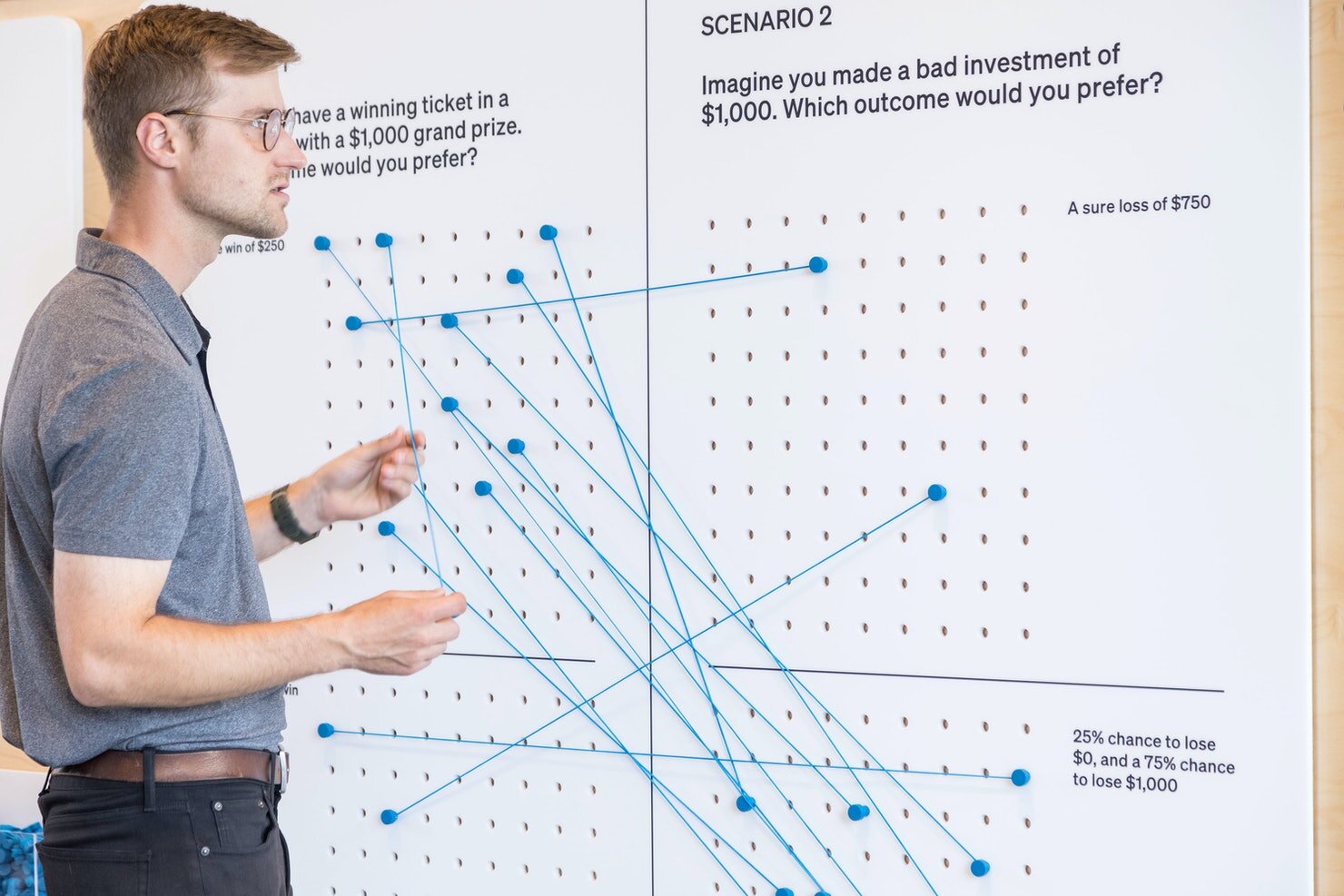Mindworks: The Science of Thinking
Identity and experience design for the world’s first lab and interactive museum dedicated to behavioral science.
We may not always be aware of them, but countless individual decisions, judgments and choices guide and impact almost everything that happens in our daily lives. Behavioral science is the study of this decision making––the mental leaps that we all make, consciously or not, in situations that help shape our experiences.
Mindworks: The Science of Thinking is the world’s first discovery center and working lab dedicated to behavioral science. Presented by the Center for Decision Research (CDR) at the University of Chicago Booth School of Business, the space is a one-of-a-kind experience where people can learn more about how their minds work, and at the same time, contribute to groundbreaking science as participants. At Pentagram we has developed a fun and engaging experience design for Mindworks that immerses visitors in an interactive exhibit space that both introduces the concepts behind behavioral science and produces quality research.
Mindworks was conceived by faculty at the CDR and created by the CDR in partnership with Pentagram, the architectural firm KrueckSexton Partners, the University of Chicago Facilities Services, and Executive Construction, Inc. The space is free and open to the public and features eight interactive exhibits that allow visitors to explore, in a hands-on way, a range of ideas and discoveries in behavioral science and to experience firsthand how findings from research in the field can be applied to help them understand and improve their lives.
The project was developed in collaboration by three Pentagram partners: my team team created the experience design and interactive installations; Abbott Miller and team developed the exhibition design, display system and environmental graphics; and Luke Hayman and team designed the visual identity.
Working with CDR, we developed a series of exhibits that translate the principles of behavioral science into dynamic hands-on experiences that capture decision making in process. We conducted workshops with faculty and staff to find the focus for a variety of installations that would reflect and inform the ongoing research by CDR.
We also helped develop the Mindworks name and identified moments within the flow of the exhibition for individual modules centered on specific behavioral science principles.
The Mindworks exhibits bring the principles of behavioral science to life in an engaging and meaningful way. Visitors are invited to participate in a series of interactive installations that explore the theories, concepts and factors behind the field through games, puzzles, infographics and other activities. We developed an infrastructure for asking questions that would result in valuable research data, and abstract concepts have been translated into physical data visualizations that help people learn through doing.
The experiments are fun and encourage a sense of play, but have scientific value for researchers as they collect data. The exhibits employ the principles of “data humanism”––using data to uncover the human stories behind the numbers and statistics, and to challenge the idea of data as something that is impersonal and intimidating. Built around the system of pegboard panels, the modular design can be easily updated with new exhibits and information.
The marquee exhibit is “Design Your Best Life,” an infographic mural explaining the ideas of Choice Architecture and Nudges. Visitors choose a colorful shape to answer each question, ultimately creating a layered data portrait that represents their goals and chosen techniques to remove any barriers from achieving them. The portrait is displayed on the wall alongside others leaving behind a data collection for researchers.
Another installation, “Are You a Risk Taker?,” asks visitors to consider how they would behave in imaginary scenarios that help illustrate Prospect Theory, a concept that explores the predictable errors that humans make because of the tendency to feel a loss more powerfully than an equal gain. Strings are used to mark responses in the pegboard to form a Prospect Theory matrix.
Other modules include “How Do Our Eyes Fool Us?,” with visual illusions that show how the mind takes shortcuts, and “What’s in a Face?,” which explores the power of first impressions in a unique photo booth that allows visitors to see their faces in a new way. The contemplative “Power of Regret” allows visitors to take a step back and reflect on the choices they’ve made and discover patterns in these decisions that may help them minimize regret.
